 Tourism
Tourism
Sabie is a popular tourist destination with breathtaking nature scenes and spectacular water falls in
pristine mountain streams. The tourism infrastructure is well developed with a number of
accommodation establishments and restaurants.
 Facilities
Facilities
The delightful forestry and tourist town of Sabie is proud to be without a single parking meter or
traffic robot, but we do have a fine collection of stop streets! All businesses and facilities
in town are within walking distance and ample provision has been made for tour bus parking.
Accommodation:
Our 40 accommodation establishments cater for the full range of accommodation preferences.
These include stately lodges, homely bed & breakfast guest houses, fully equipped self-catering
chalets and tents, shady camp sites and budget accommodation for backpackers. A number of
establishments also offer state-of-the-art conference venues.
For the Hungry:
Sabie have more that 20 restaurants, pubs, coffee shops, pancake bars, biltong delicatessens and
fast food outlets catering for all culinary delights. For the self catering enthusiasts our
supermarkets, butcheries, bakeries and liquor stores will keep your pantries and picnic baskets well
stocked.
Shopping:
The closest major shopping mall is in Nelspruit (60 km from Sabie), but its an experience to
shop-till-you-drop in our dozen or so curio shops and numerous road-side curio stalls. With
nature on our doorstep, the town of Sabie is an inspiring environment for a growing number of
artists and craftsmen and women, producing unique works of art. Should you require more
mundane goodies, our building & hardware, clothing & furniture and hiking &
camping shops are well stocked.
Business:
Two banks (First National and Standard) are fully represented in Sabie, each with ATMs and
foreign currency exchange services. There is also a ABSA Bank agency and ATM in Sabie.
Sabie sports fast and efficient postal, courier and rail services. Cell phone reception
is good and if you have to send and receive E-mail, visit Sabie's Internet Café.
Health:
For the not so well, Sabie's doctors, dentists, physiotherapist, hospital, ambulance service,
pharmacies, clinics and old-age home will ease the burden. Specialist medical services are
available in Nelspruit (65km from Sabie).
Automotive:
Should you experience mechanical problems, our tow-in services, garages, workshops and automotive
spare-parts outlets will have you back on the road in no time. The only automotive dealership
in town is that of Toyota, but most of the other dealerships are represented in Nelspruit (65km
from Sabie).
Education:
There are seven primary and secondary schools (some with hostel facilities) in Sabie, providing
quality education to more than 2 500 learners. In addition to these schools there are a
number of pre-primary schools and crèches, as well as dedicated individuals providing tuition in
sport, music, computer literacy, mathematics, languages, ABET (Adult Basic Education and Training)
and driver licenses. The municipal library have a fine collection of books and other
reference material.
Sport:
For the sport enthusiast, Sabie offers a number of facilities for sports such as aerobics, bowls,
clay pigeon shooting, cricket, cycling, golf, rugby, soccer, spinning, squash, swimming, tennis,
horse riding & dressage, hiking, mountain biking, rock climbing & abseiling, white water
rafting, caving and fly-fishing. The Bambanani Indoor Sports Centre and the Country Club
houses a number of these sport facilities. For more information
see our Adventure & Sport page.
Forest Industry Museum:
Sabie's pride and joy is the SAFCOL Forest Industry Museum. This museum is the only one of its
kind on the African Continent and is well worth a visit. Not only is it educational, but it's
displays fascinates both old and young alike.

 Trade and Industry
Trade and Industry
The Forestry industry is by far the largest industry in Sabie. The commercial plantations
surrounding Sabie is one of the largest man-made forests in the world and thousands of workers and
contractors are employed in the plantations and sawmills around Sabie. For more information
about the Forestry Industry, see our special Forestry page.
Sabie offers all the key elements for profitable industrial developments. These include water,
electricity, labour and wood-based raw materials, as well as the supporting infrastructure, such as
modern road and rail links, and telecommunications.
With its breathtaking nature scenes, spectacular water falls and pristine mountain streams, Sabie is
a popular tourist destination. The tourism infrastructure is well developed with a large
number of accommodation establishments, restaurants, curio shops and hiking trails. There is
general consensus that the tourism potential in Sabie is still largely under-utilised.
Prospective developers and investors are advised to contact
the Sabie Chamber of Commerce and Tourism (Willie Kruger on 078 077-0027) or the Municipal Manager
(see below under Governance) for more information.
 Governance
Governance
 Sabie, along with the towns of Graskop, Lydenburg and Pilgrims Rest, is part of the Thaba Chweu
Municipality. "Taba Chweu" (White Mountain) is a Sotho phrase that refers to
the occasional snow-capped peaks of Mauchberg, Formosa and Mount Anderson - the three 2 200m
(7 200 ft) high mountain peaks between Sabie and Lydenburg.
Sabie, along with the towns of Graskop, Lydenburg and Pilgrims Rest, is part of the Thaba Chweu
Municipality. "Taba Chweu" (White Mountain) is a Sotho phrase that refers to
the occasional snow-capped peaks of Mauchberg, Formosa and Mount Anderson - the three 2 200m
(7 200 ft) high mountain peaks between Sabie and Lydenburg.
| Mayor: |
Mr Moses M. Mashego |
(013) 235-2121 |
| Municipal Manager: |
Mr. Mbuso Manana |
(013) 764-6000 |
 Fauna and Flora
Fauna and Flora
The escarpment is a mosaic of rocky hillsides, mountain grassland and pockets of
Afromontane-mistbelt forest. Natural habitats are fragmented by vast plantations of exotic
pine and eucalyptus trees. The mountain grasslands contain a rich diversity of plant species, many of
which are protected species.
During the summer months these lush grasslands, especially the wetlands with their rich
carpet of flowers, are a delight to behold.
 A
diverse variety of mammals occur in the wooded valleys and mountain
grasslands. Most notable is the elusive black leopard - seen
by but a privileged few.
A
diverse variety of mammals occur in the wooded valleys and mountain
grasslands. Most notable is the elusive black leopard - seen
by but a privileged few.
More than 20 registered Natural Heritage Sites occur within less than
an hour's drive from Sabie. The qualification criteria for
registration include stands of special plant communities, good
examples of aquatic habitats, sensitive catchment areas, habitats of threatened
or endangered species, as well as outstanding natural features.
For more information see our Natural
Heritage page.
 Climate
Climate
Sabie, at an altitude of 1 000 metres about sea level, falls within the summer rainfall area of
South Africa. The average rainfall is more than 1 200mm per annum with even higher rainfall figures on the
mountain slopes above Sabie. Most of the rain falls between October and April with the
highest rainfall in January and February (170 - 190mm per month). Thunderstorms, with occasional
hail, occur often but most of the rainfall is in the form of soft penetrating rain, often lasting
several days.
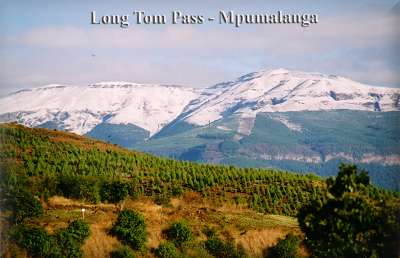

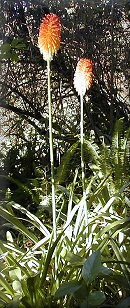
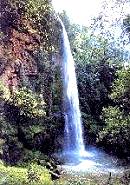
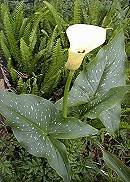
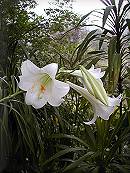


 Sabie, along with the towns of Graskop, Lydenburg and Pilgrims Rest, is part of the Thaba Chweu
Municipality. "Taba Chweu" (White Mountain) is a Sotho phrase that refers to
the occasional snow-capped peaks of Mauchberg, Formosa and Mount Anderson - the three 2 200m
(7 200 ft) high mountain peaks between Sabie and Lydenburg.
Sabie, along with the towns of Graskop, Lydenburg and Pilgrims Rest, is part of the Thaba Chweu
Municipality. "Taba Chweu" (White Mountain) is a Sotho phrase that refers to
the occasional snow-capped peaks of Mauchberg, Formosa and Mount Anderson - the three 2 200m
(7 200 ft) high mountain peaks between Sabie and Lydenburg.
 A
diverse variety of mammals occur in the wooded valleys and mountain
grasslands. Most notable is the elusive black leopard - seen
by but a privileged few.
A
diverse variety of mammals occur in the wooded valleys and mountain
grasslands. Most notable is the elusive black leopard - seen
by but a privileged few.
